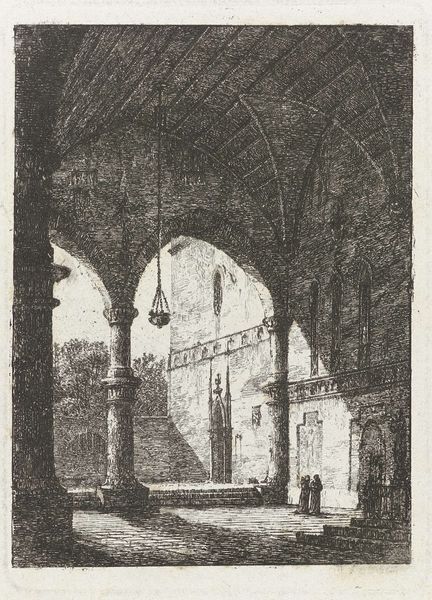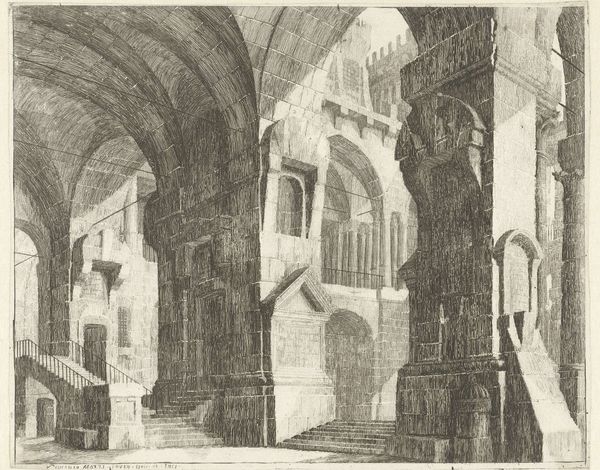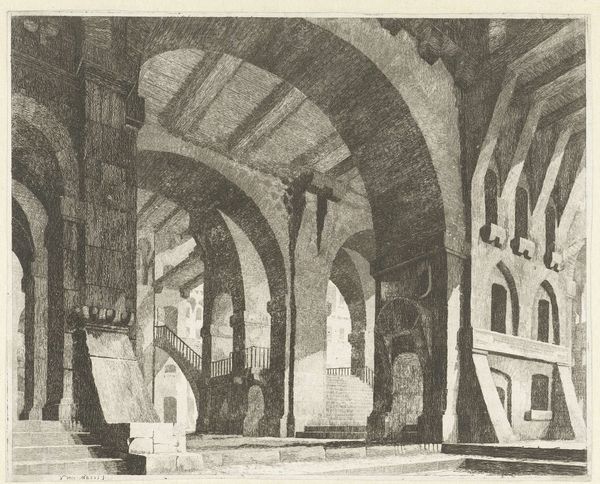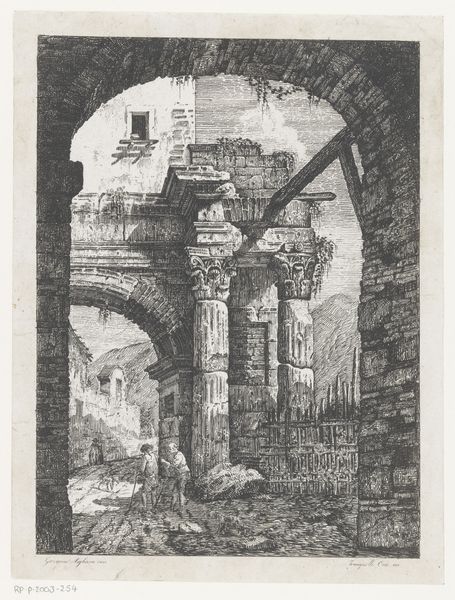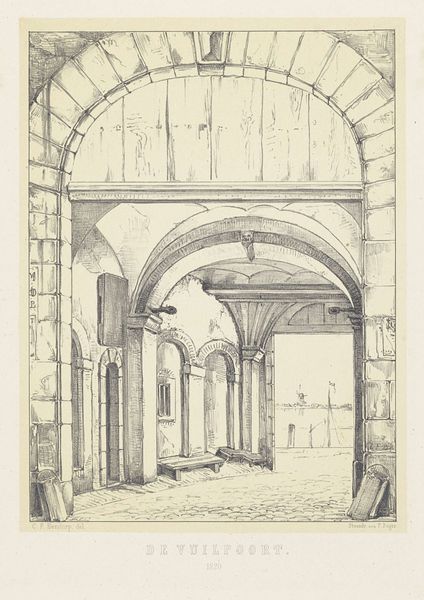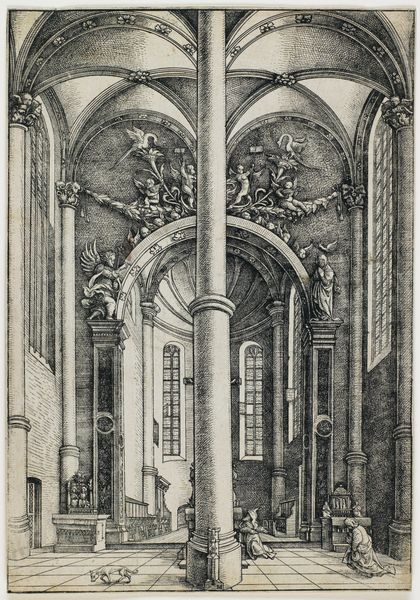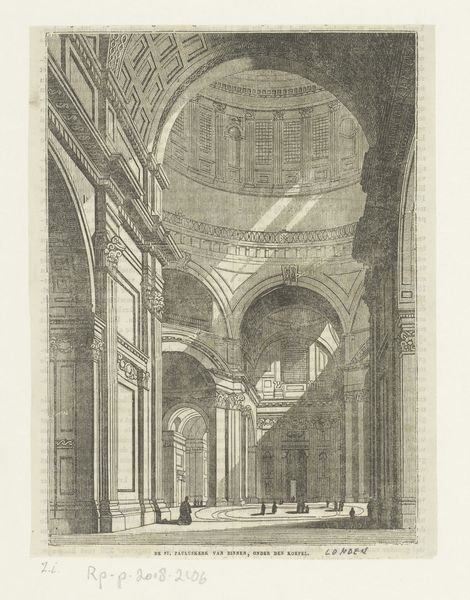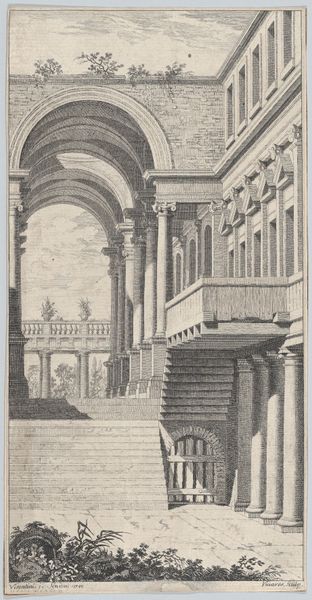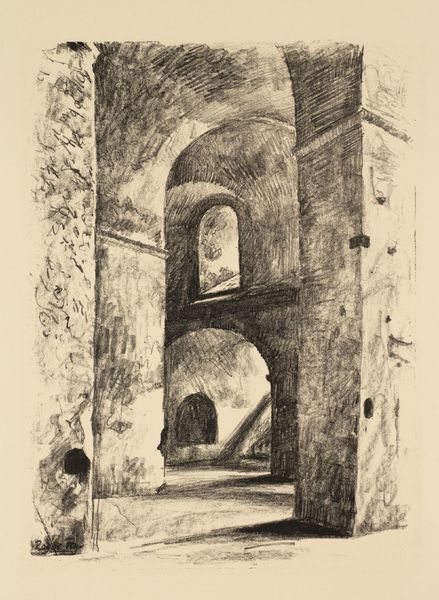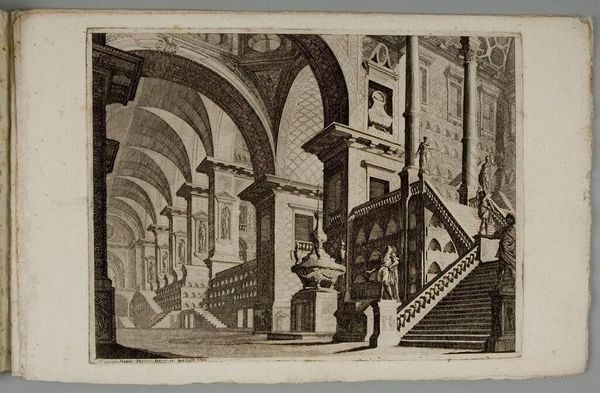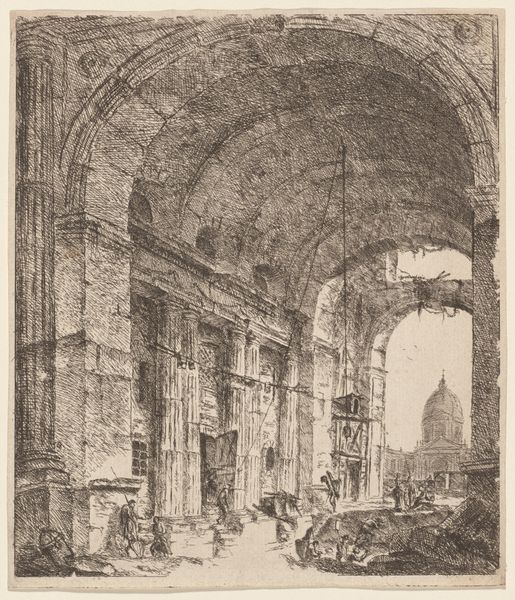
#
light pencil work
#
shading to add clarity
#
pen sketch
#
pencil sketch
#
old engraving style
#
personal sketchbook
#
pen-ink sketch
#
pen work
#
sketchbook drawing
#
sketchbook art
Dimensions: height 273 mm, width 218 mm
Copyright: Rijks Museum: Open Domain
Curator: Let's discuss "Interieur van een gebouw," or "Interior of a Building," created by Vincenzo Mazzi in 1776. What's your first impression? Editor: Claustrophobia. A soaring but confining space, rendered entirely in monochromatic lines. It feels monumental and yet also… oppressive. Curator: Mazzi's use of pen and ink here is fascinating. Look closely; the density of the cross-hatching truly creates the illusion of depth and volume with minimal material. It speaks to a rigorous, almost architectural approach to image-making. Editor: The arches upon arches evoke the visual language of power and order from the ancient Romans that experienced a cultural and political resurgence during that period, even in northern european nations, that never actually were part of the empire. Staircases leading to nowhere, a bridge that connects... what exactly? Are we meant to read the implied narrative through these symbols? Curator: Precisely. And considering the historical context, the late 18th century, we see a society grappling with shifts in power. Mazzi, with simple ink, is documenting structures embodying old hierarchies and how those architectural forms mirrored society itself, while also experimenting with affordable mediums for mass reproducibility. Editor: So, the materials themselves democratize this sense of grandeur. Pen and ink replace marble, suggesting a shift in access, even if only visually. What's striking is the absence of people. Without figures, these imposing forms become…spectral. They symbolize permanence, tradition, even when all is fleeting. Curator: Exactly! This work illustrates the means of representing power in built structures with relatively low-cost materials, indicating an important step for the proliferation of these images. Editor: It's curious how an apparently straightforward depiction becomes quite haunting, and open for interpretations depending on personal feelings toward symbols of power, class or traditions. Curator: It underscores the significance of revisiting historical forms of cultural expression and also reinterpreting old traditions. Editor: Indeed. This reminds us that every era finds new meanings, and a piece like this prompts us to bring to light things hidden by shadows, doesn’t it?
Comments
No comments
Be the first to comment and join the conversation on the ultimate creative platform.

